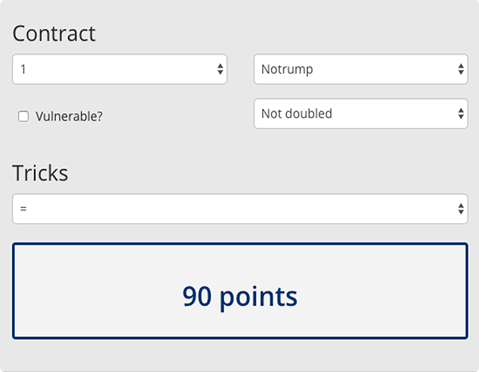Is bridge difficult?
Our resources will help you understand not only the rules themselves but also the reasons behind some of the complexities.
What do you need to play bridge?
- 4 players
- A 52 cards deck
- A score pad
- Something with which to write
Advanced players, particularly playing duplicate bridge, will also need bidding boxes and "boards", which are trays into which the cards are inserted.
Bridge rules
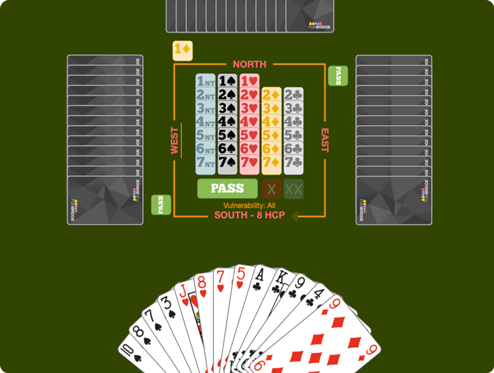
Bridge players position - Source: Funbridge app
The two teams are also called "pairs".
In a pair, whoever is playing the hand is the "declarer" because that person has declared the "trump suit" or has made the hand to be played without a trump suit, which is called "notrump".
The "dummy", which comes from the French word for silent, is the declarer's partner and places the hand face-up on the table after the "bidding" is done and the "opening lead" is made by the player on declarer's left.
The other two players are the defenders for that hand. These terms are just a few of the things you will learn during learning bridge.
If you want to know more about these bridge terms, please visit our bridge glossary.
(Or go to our how to play bridge tutorial in our app. When you use our tutorial, how to play bridge will become clearer and clearer as you progress.)
Bridge bidding
The dealer makes the first call. He is the "opener". Then the auction proceeds clockwise. There may be several bidding rounds.
The bidding ends when three players in succession say Pass, meaning that they do not want to bid higher. The final bid becomes the "contract".
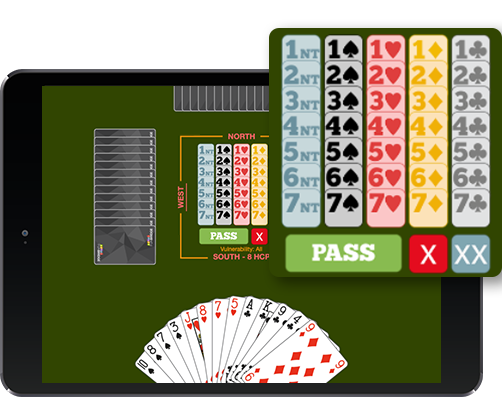
Duplicate bridge bids - Source: Funbridge app
- A number from 1 to 7 called "level".
- A suit (spades, hearts, diamonds or clubs) or "notrump" (NT).
The number refers to the total number of tricks (six plus the number indicated in the bid) one pair has contracted to make. The suit indicates the trump suit.
For instance, the North-South pair has bid 4H. It commits to making 10 tricks with hearts as trumps.
If a player thinks that the last bid made by one of his opponents is too optimistic, he can double it when it is his turn to speak. This double can be redoubled by an opponent.
The purpose of bidding is to relay information about the strengths and weaknesses of your hand to your partner. It will help you determine the easiest contract to make based on your respective hands. It is therefore important to know the meaning of each bid. This is referred to as "bidding systems and conventions".
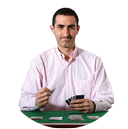
JÉRÔME ROMBAUT
2017 Vice World Bridge Champion
At the head of the team in charge of developing Funbridge game engine "Argine"
Bridge card play

Duplicate bridge card play phase
The "declarer": the player of the pair who first mentions the suit or notrump that becomes the final contract.
The "dummy": the declarer’s partner.
The "defence": the opponent team.
Step 1: the opening lead
The player to the left of the declarer starts the play by making the "opening lead".
He names the suit and the other players have to play a card in that suit if they have one.
Otherwise they can ruff with a card in the trump suit or discard any other card.
Step 2: the dummy lays out his cards
After the opening lead, the dummy places his 13 cards face-up on the table and his partner calls the cards during the play for both hands.
Step 3: winning tricks
Whoever has played the highest card in the suit wins the trick and leads any card in any suit desired to the next trick.
In a trump contract, if a player doesn't have a card in the suit led, a trump can be played. In that case, he takes the trick unless a higher trump card is played by someone else.
Step 4: the end of the deal
At the end of the deal, if the declaring pair takes the number of tricks (or more) it committed to in the initial contract, it scores a certain number of points. But if it doesn't make its contract, the other pair score points.
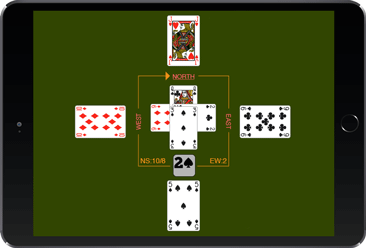
Number of points scored at the end of a bridge deal
Bridge game scoring
Bridge game walkthrough tutorial
Our app covers many levels of bridge bidding and different forms of scoring. It encompasses 11 chapters and gets more and more advanced as it goes.
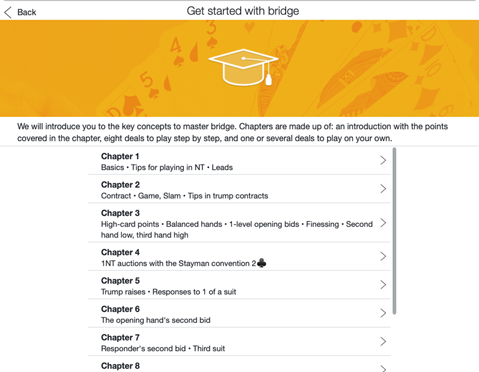
Bridge tutorial table of contents
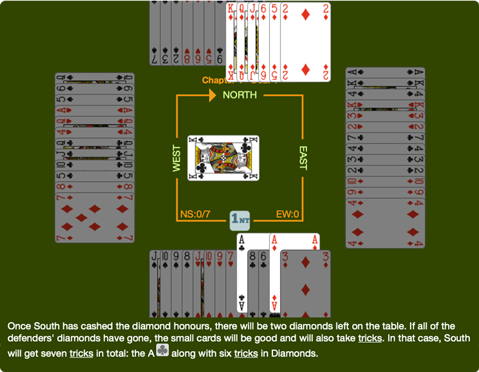
Bridge tutorial lesson
There are certain guidelines for making bids, and these bids are a form of legal "table talk". Of course, you can't say "I have six spades in my hand, so let's play a spade contract". You can however bid spades twice to indicate you have six or more of them in your hand.
Our app goes into these guidelines in detail and provides examples of them to check for understanding. It even gets into what are known as pre-emptive bids, which allow you to say "I have six, or even seven, of this suit, so I'd like to play in that suit" legally.
Where to play bridge game
Play bridge online
Come discover:
- Various game modes, from learning bridge to competitive bridge
- An artificial intelligence system that mimics human behaviour and plays with and against you at any time of the day
- An active community with over 70,000 online players from all over the world every day!
Play bridge offline
There are several ways to play bridge offline:
- Play bridge at home

You can very easily play bridge at home and organise your own bridge sessions with your friends in your living room.
You do not have to have much equipment in order to play bridge at home. To find out more, see our article "What do you need to play bridge?".
- Find a bridge club
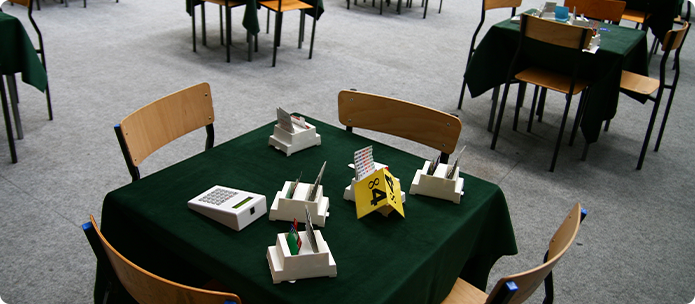
Bridge clubs are also an excellent way to practise bridge offline. They are friendly places, attracting players of all levels, where you can learn to play bridge through lessons given by bridge teachers and professionals.
To find a bridge club near you, don’t hesitate to visit our bridge clubs directory.
- Go on "duplicate bridge holidays"
A lot of tour operators offer bridge trips (cruises, spas, New Year’s Eve trips, courses...) where you can enjoy a pleasant holiday in the company of other bridge lovers.
Most of the trips offered include lessons and bridge tournaments. Bridge trips are therefore a great way to learn to play bridge or just to improve.
Jérôme Rombaut, world bridge runner-up in 2017 and member of the Funbridge Team, organises bridge teaching trips every year in which he gives bridge lessons on specific topics. To find out his next destinations and schedule your next bridge travel, go to the Voyages Funbridge website.
The most well-known bridge tour operators:
Test your duplicate bridge skills
For this, we suggest that you take a look at our Funbridge Quiz applications (available on smartphones and tablets), which allow you to test yourself and evaluate your bridge level through hundreds of quiz questions in the main areas of the game: bidding, card play, leading, defence, forcing or non-forcing.
Test my duplicate bridge skills
You can also find some quizzes from our Funbridge Quiz apps on our Facebook page.
Test my duplicate bridge skills on Facebook
Additional resources to learn bridge game
Bridge tools
- Bridge score calculator: to help you count points at the end of a bridge deal
- Bridge bid decoder: to help you understand bridge bids
- Bridge glossary: to know every bridge expressions and bridge terms
